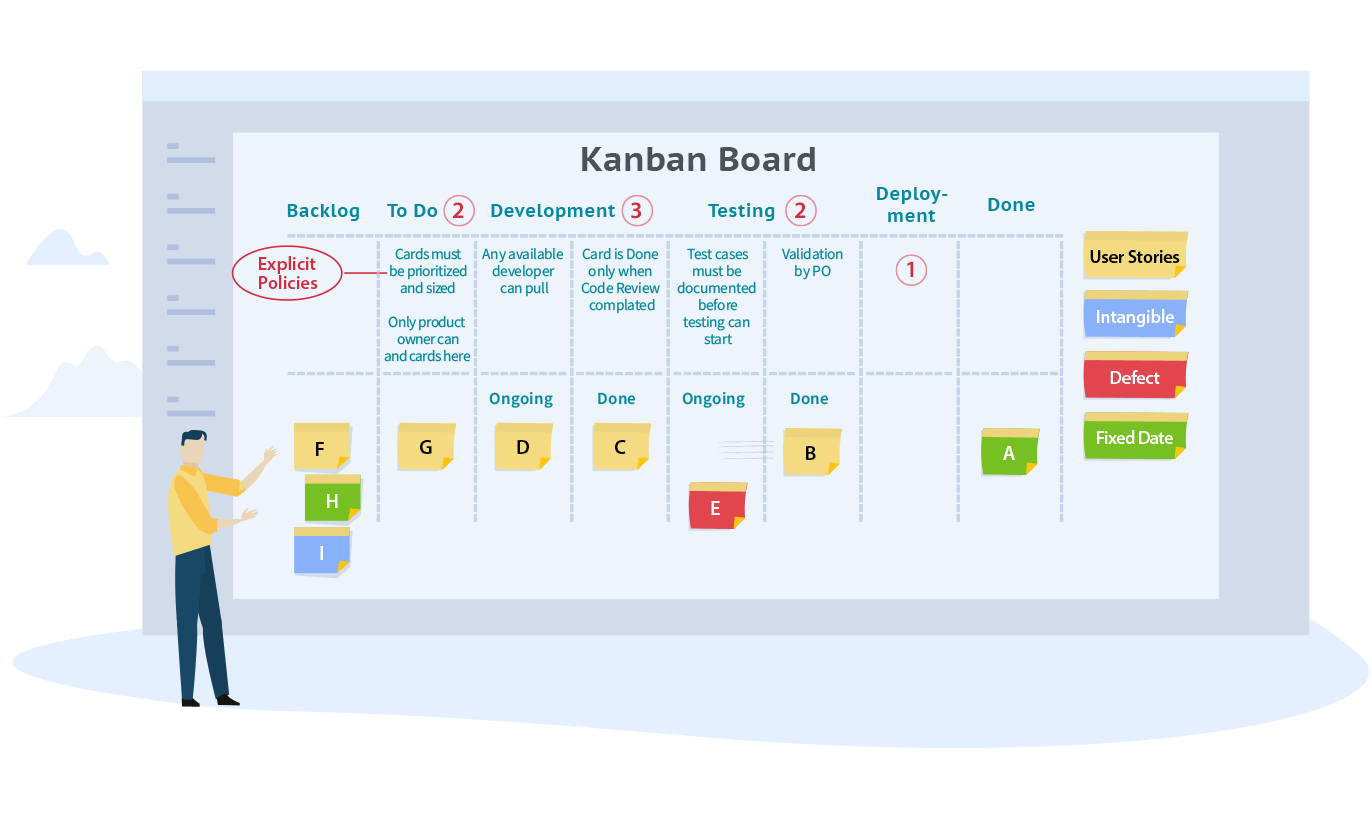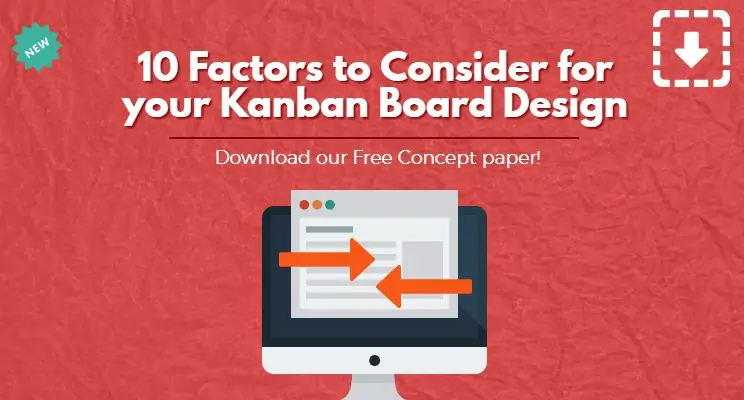How do you design your first Kanban board? This thought was triggered by a question posted by someone who works at an agency and were trying to figure out the best way to set up their Kanban board. The agency appears to be a small team working on multiple customer assignments and they wanted to use Kanban to track all of the work they do.

While starting with Kanban may appear simple enough – after all, what can be simpler than ‘start with what you have’?! – modeling your first Kanban board does require some thinking and planning as it depends on a number of factors. Several questions come up – how do you organize your board? Do you have all projects on a single board? Do you have all teams on a single board? Should you organize the board by class of service? Or by type of work?
(Other process issues also come up. How do you define the WIP limit for each column? Should you keep it equal to the number of people available to work in that column? Should you assume some capacity utilization factor? Some minimal level of multi-tasking that may be needed? What about buffer lanes? Should you have a done column after each in-progress lane – or only after a logical group of in-progress lanes? Should there be WIP limits for done queues? Should the in-progress and the done WIP Limits add up to the overall queue limit? However, these appear to be more advanced issues to be dealt with after an initial board is established and used for some time.)
The most immediate and significant (in terms of the effort and impact) challenge for most teams is to define the basic Board layout and organization. Two key aspects of this analysis are –
– Key Performance Parameters that a team wants to use, and
– The Overall Information Model – how does data need to be captured and then used for roll-up and reporting
Before taking a plunge into deciding how to organize the Board, teams must give some thought to what their business objectives are. What key performance dimensions are important to them and their organization? What kind of basic reporting, slicing and dicing may be needed once the board is setup? How easy would it be to change it, if needed? These and other questions need to be tackled up front.
By and large, the focus of teams using the Kanban method for improvement and management, is to address lead/ cycle time, throughput, cost of delay and the ability to forecast and make commitments to customers that they can stand by. But, depending on the nature of your business, the answer to this question may vary.
Once these decisions have been taken, it may become fairly simple to decide how your Kanban board should be organized so that it directly – or most easily – feeds the information requirements of your management and organization.
To help do this analysis, we looked at the common recurring issues that need to be addressed and identified at least 10 factors that must be looked at. These factors are listed below and discussed in much more detail in the white paper “10 Factors to Consider for your Kanban Board Design”.
Key Factors affecting Kanban Board design
While there may be many factors that determine your Kanban board design, the 10 most recurring factors that we have come across are the following:
- What kind of work is best managed on a Kanban board?
- The Board Organization/ Information Model
- The Scope of your Board – Vertical and Horizontal
- The Work-Mix you will Manage on the Board
- Granularity of Workflow
- Granularity of the Work itself
- Limiting Work-in-Progress (WIP) – how?
- Defining Classes of Service
- Defining Explicit Board Policies
- The Organization/ Enterprise Context
These and similar considerations define how you should think about modeling your Kanban Board. Depending on your situation, the answers to multiple questions might point in conflicting directions – or at least appear to be so.
To learn more, click here to access our ‘concept paper’ that we hope you will find useful in designing your initial Kanban board(s)!
Mahesh Singh
Co-founder, Sr. VP – Marketing








0 Comments
Don’t expect to get it right first time. It is more of a journey than a destination. The key is to keep your team engaged and part of the process. Have fun!
Absolutely, Marc – you said it! Thanks for your time!